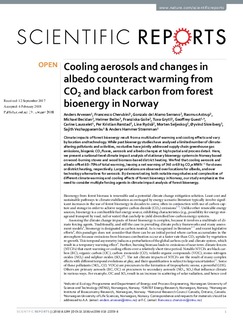| dc.contributor.author | Arvesen, Anders | |
| dc.contributor.author | Cherubini, Francesco | |
| dc.contributor.author | del Alamo Serrano, Gonzalo | |
| dc.contributor.author | Astrup, Rasmus Andreas | |
| dc.contributor.author | Becidan, Michael | |
| dc.contributor.author | Belbo, Helmer | |
| dc.contributor.author | Goile, Franziska | |
| dc.contributor.author | Grytli, Tuva | |
| dc.contributor.author | Guest, Geoffrey | |
| dc.contributor.author | Lausselet, Carine | |
| dc.contributor.author | Rørstad, Per Kr. | |
| dc.contributor.author | Rydså, Line | |
| dc.contributor.author | Seljeskog, Morten | |
| dc.contributor.author | Skreiberg, Øyvind | |
| dc.contributor.author | Vezhapparambu, Veena Sajith | |
| dc.contributor.author | Strømman, Anders Hammer | |
| dc.date.accessioned | 2018-02-28T15:50:36Z | |
| dc.date.available | 2018-02-28T15:50:36Z | |
| dc.date.created | 2018-02-07T13:53:39Z | |
| dc.date.issued | 2018 | |
| dc.identifier.issn | 2045-2322 | |
| dc.identifier.uri | http://hdl.handle.net/11250/2487843 | |
| dc.description.abstract | Climate impacts of forest bioenergy result from a multitude of warming and cooling effects and vary by location and technology. While past bioenergy studies have analysed a limited number of climate-altering pollutants and activities, no studies have jointly addressed supply chain greenhouse gas emissions, biogenic CO2 fluxes, aerosols and albedo changes at high spatial and process detail. Here, we present a national-level climate impact analysis of stationary bioenergy systems in Norway based on wood-burning stoves and wood biomass-based district heating. We find that cooling aerosols and albedo offset 60–70% of total warming, leaving a net warming of 340 or 69 kg CO2e MWh−1 for stoves or district heating, respectively. Large variations are observed over locations for albedo, and over technology alternatives for aerosols. By demonstrating both notable magnitudes and complexities of different climate warming and cooling effects of forest bioenergy in Norway, our study emphasizes the need to consider multiple forcing agents in climate impact analysis of forest bioenergy. | nb_NO |
| dc.language.iso | eng | nb_NO |
| dc.publisher | Nature Publishing Group | nb_NO |
| dc.rights | Navngivelse 4.0 Internasjonal | * |
| dc.rights.uri | http://creativecommons.org/licenses/by/4.0/deed.no | * |
| dc.title | Cooling aerosols and changes in albedo counteract warming from CO2 and black carbon from forest bioenergy in Norway | nb_NO |
| dc.type | Journal article | nb_NO |
| dc.type | Peer reviewed | nb_NO |
| dc.description.version | publishedVersion | nb_NO |
| dc.source.volume | 8 | nb_NO |
| dc.source.journal | Scientific Reports | nb_NO |
| dc.identifier.doi | 10.1038/s41598-018-21559-8 | |
| dc.identifier.cristin | 1562847 | |
| dc.relation.project | Norges forskningsråd: 193817 | nb_NO |
| dc.description.localcode | © The Author(s) 2018. Open Access. This article is licensed under a Creative Commons Attribution 4.0 International License. | nb_NO |
| cristin.unitcode | 194,64,25,0 | |
| cristin.unitcode | 194,64,90,0 | |
| cristin.unitname | Institutt for energi- og prosessteknikk | |
| cristin.unitname | Institutt for geovitenskap og petroleum | |
| cristin.ispublished | false | |
| cristin.fulltext | original | |
| cristin.qualitycode | 1 | |

